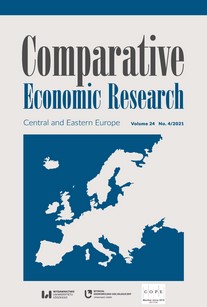Value Added from the Perspective of Econophysics
Value Added from the Perspective of Econophysics
Author(s): Ihor Hurnyak, Nataliya Struk, Aleksandra KordonskaSubject(s): National Economy, Business Economy / Management, Financial Markets, Accounting - Business Administration
Published by: Wydawnictwo Uniwersytetu Łódzkiego
Keywords: accounting; business; economic forces; economic value added; econophysics;
Summary/Abstract: The production, or value added, approach to GDP involves calculating an industry or sector’s output and subtracting its intermediate consumption (the goods and services used to produce the output) to derive its value added. The value added at the macro level depends on business efficiency. It reflects an increase in value that a business creates by undertaking the production process. We assumed that the market creates thousands of vibrating energies, coming from other enterprises, with different frequencies. The purpose of this article is to verify whether the econophysics approach could be successfully used to assess a business from the perspective of the interaction between economic forces. Thus, we propose that the term ‘value added’ be understood as a certain amount of accumulated energy of enterprises that comes from the interaction of basic economic forces and economic vibrating forces of accounting. Using regression models, we show the influence of basic forces, like debt and the stock market, and vibrating ones (i.e., accounts payable, accounts receivable, inventory) on the economic value added by testing US, European, and emerging markets. We confirmed the relevance and appropriateness of the econophysics approach to estimating the economic value added.
Journal: Comparative Economic Research. Central and Eastern Europe
- Issue Year: 24/2021
- Issue No: 4
- Page Range: 137-152
- Page Count: 16
- Language: English

